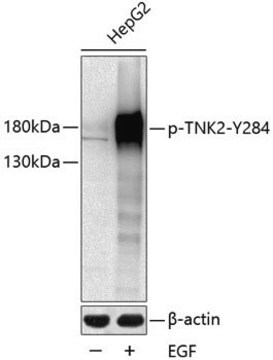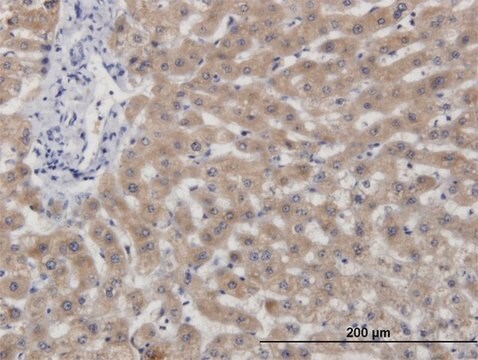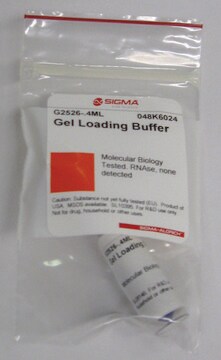09-142
Anti-phospho-ACK1 (Tyr284) Antibody
Upstate®, from rabbit
Synonym(s):
TNK2, tyrosine kinase non-receptor 2, p21cdc42Hs, activated Cdc42-associated kinase 1, activated p21cdc42Hs kinase
About This Item
Recommended Products
biological source
rabbit
Quality Level
antibody form
affinity purified immunoglobulin
clone
polyclonal
purified by
affinity chromatography
species reactivity
human
manufacturer/tradename
Upstate®
technique(s)
dot blot: suitable
inhibition assay: suitable
western blot: suitable
isotype
IgG
NCBI accession no.
UniProt accession no.
shipped in
wet ice
target post-translational modification
phosphorylation (pTyr284)
Gene Information
human ... TNK2(10188)
General description
Specificity
Immunogen
Application
Quality Control Testing
Evaluated by Western Blotting in A431 cell lysate.Western Blotting Analysis: A 1:250 dilution of this antibody detected phospho-ACK1(Tyr284) in A431 cell lysate.
Tested ApplicationsDot Blot Analysis: Anti-phospho-ACK1 (Tyr284)) antibody 09-142 detected Phospho-ACK1 (Tyr284) peptide, but not the unmodified ACK1 peptide.Peptide Inhibition Assay: Target band detection in a lysate from A431 cells was prevented by preblocking of a representative lot with the immunogen phosphopeptide, but not the corresponding non-phosphopeptide.Note: Actual optimal working dilutions must be determined by end user as specimens, and experimental conditions may vary with the end user.
Quality
Target description
Physical form
Storage and Stability
Other Notes
Legal Information
Storage Class Code
10 - Combustible liquids
WGK
WGK 2
Certificates of Analysis (COA)
Search for Certificates of Analysis (COA) by entering the products Lot/Batch Number. Lot and Batch Numbers can be found on a product’s label following the words ‘Lot’ or ‘Batch’.
Already Own This Product?
Find documentation for the products that you have recently purchased in the Document Library.
Our team of scientists has experience in all areas of research including Life Science, Material Science, Chemical Synthesis, Chromatography, Analytical and many others.
Contact Technical Service





